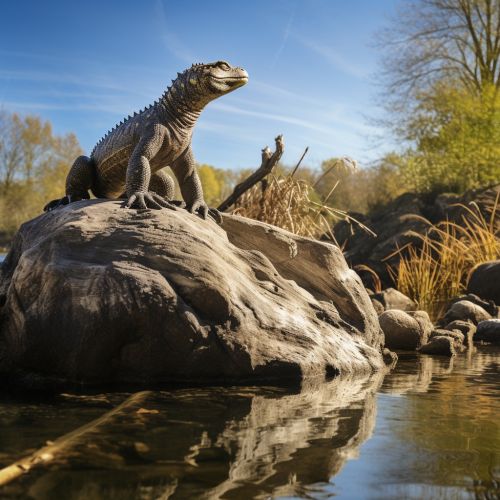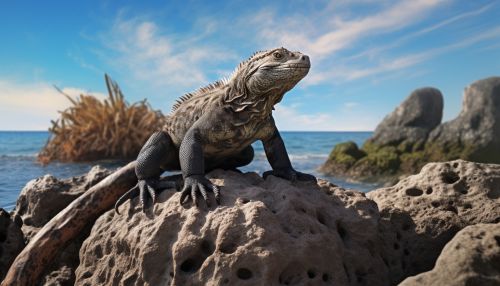Tetrapod
Introduction
Tetrapods (Tetrapoda) are a superclass of animals that includes four-limbed vertebrates. The term "tetrapod" is derived from the Greek words for "four" and "foot," reflecting the characteristic feature of this group. Tetrapods are primarily terrestrial animals, although some have returned to an aquatic lifestyle. They represent one of the most significant evolutionary transitions in the history of life on Earth.
Evolutionary Origins
The first tetrapods evolved from lobe-finned fishes (Sarcopterygii) in the Devonian period, around 375 million years ago. This transition was marked by the development of limbs with digits, the loss of internal gills, and modifications to the skeleton to support the body in a terrestrial environment. The earliest known tetrapod is Acanthostega, a creature that still retained many fish-like features but had developed primitive limbs.
Anatomy and Physiology
Tetrapods share several key anatomical features that distinguish them from other vertebrates. These include a spine that is divided into two distinct regions: the cervical (neck) and the dorsal (back). Tetrapods also have a pelvic girdle that is firmly attached to the spine, providing support for the hind limbs. The limbs themselves are pentadactyl, meaning they typically have five digits, although this number can vary among different groups.


Classification
Tetrapods are divided into four major groups: amphibians (Amphibia), reptiles (Reptilia), birds (Aves), and mammals (Mammalia). Each of these groups has evolved unique adaptations to their specific environments and lifestyles. For example, birds have developed feathers and the ability to fly, while mammals have evolved hair and mammary glands.
Ecological Roles
Tetrapods play diverse roles in ecosystems around the world. They can be herbivores, carnivores, or omnivores, and their feeding habits can significantly influence the structure of ecological communities. Some tetrapods, such as beavers (Castor), can even modify their environment to create new habitats.
Conservation
Many species of tetrapods are currently threatened with extinction due to habitat loss, climate change, and other human-induced factors. Conservation efforts are underway to protect these species and their habitats, with strategies ranging from the establishment of protected areas to captive breeding programs.
